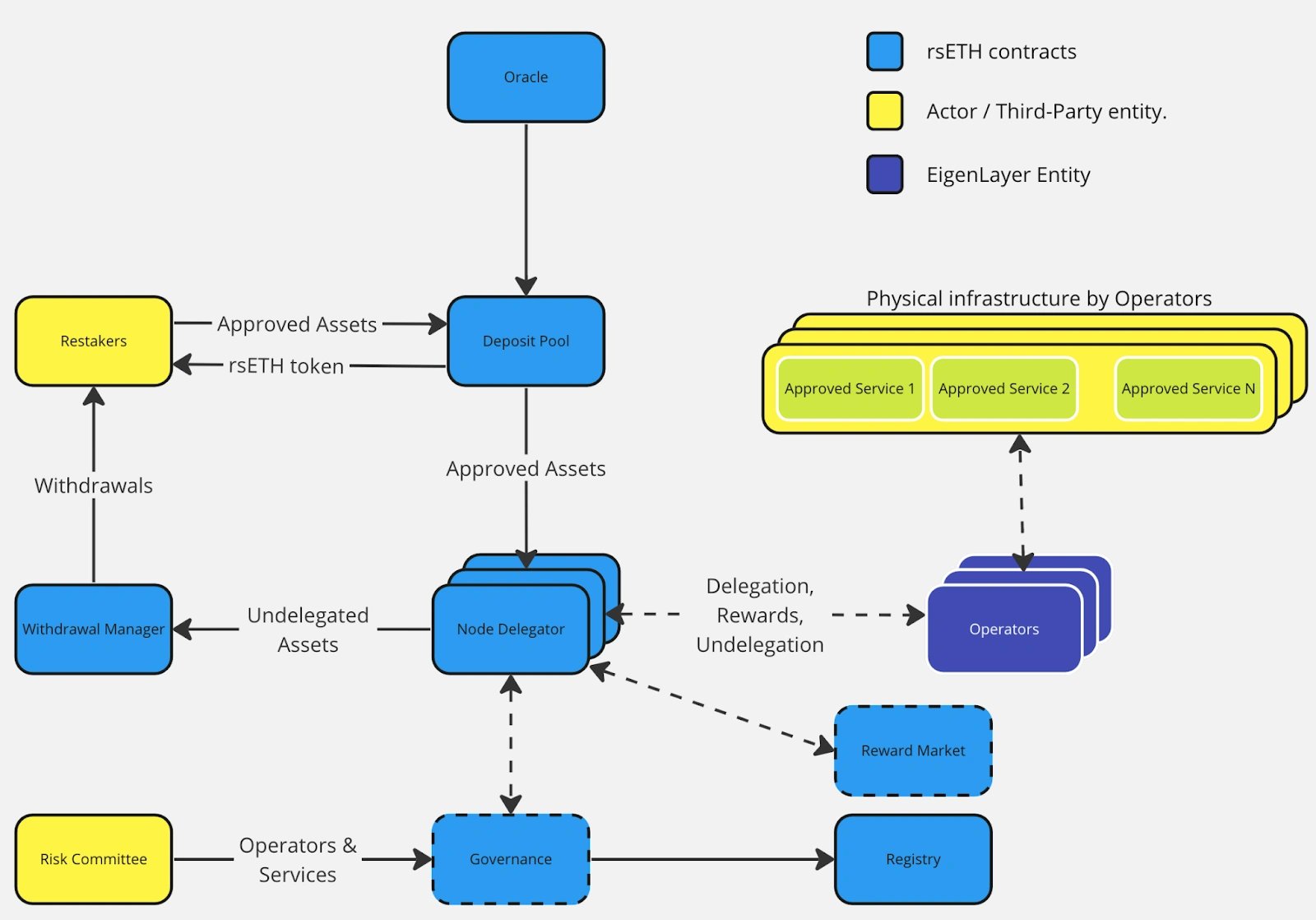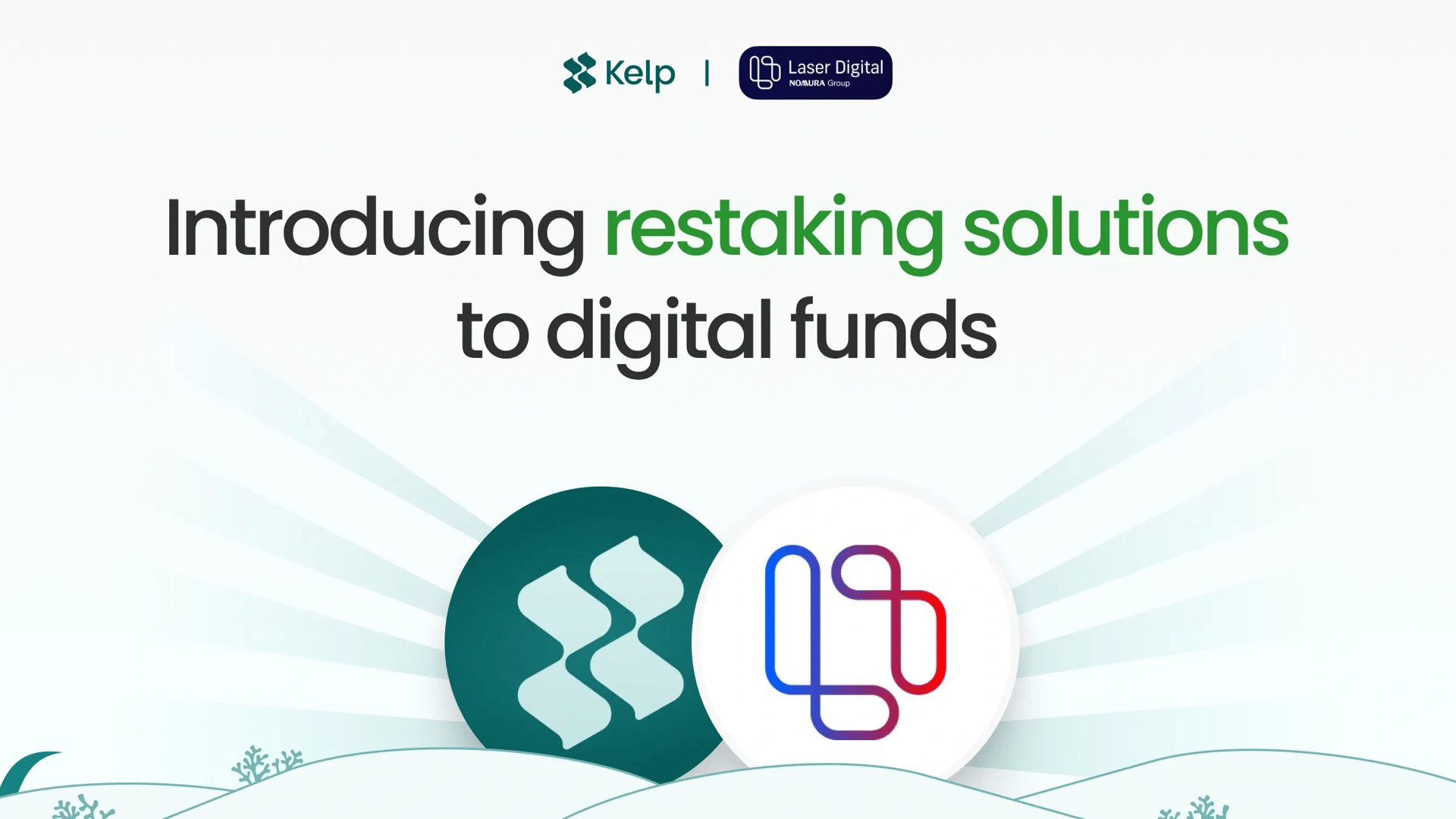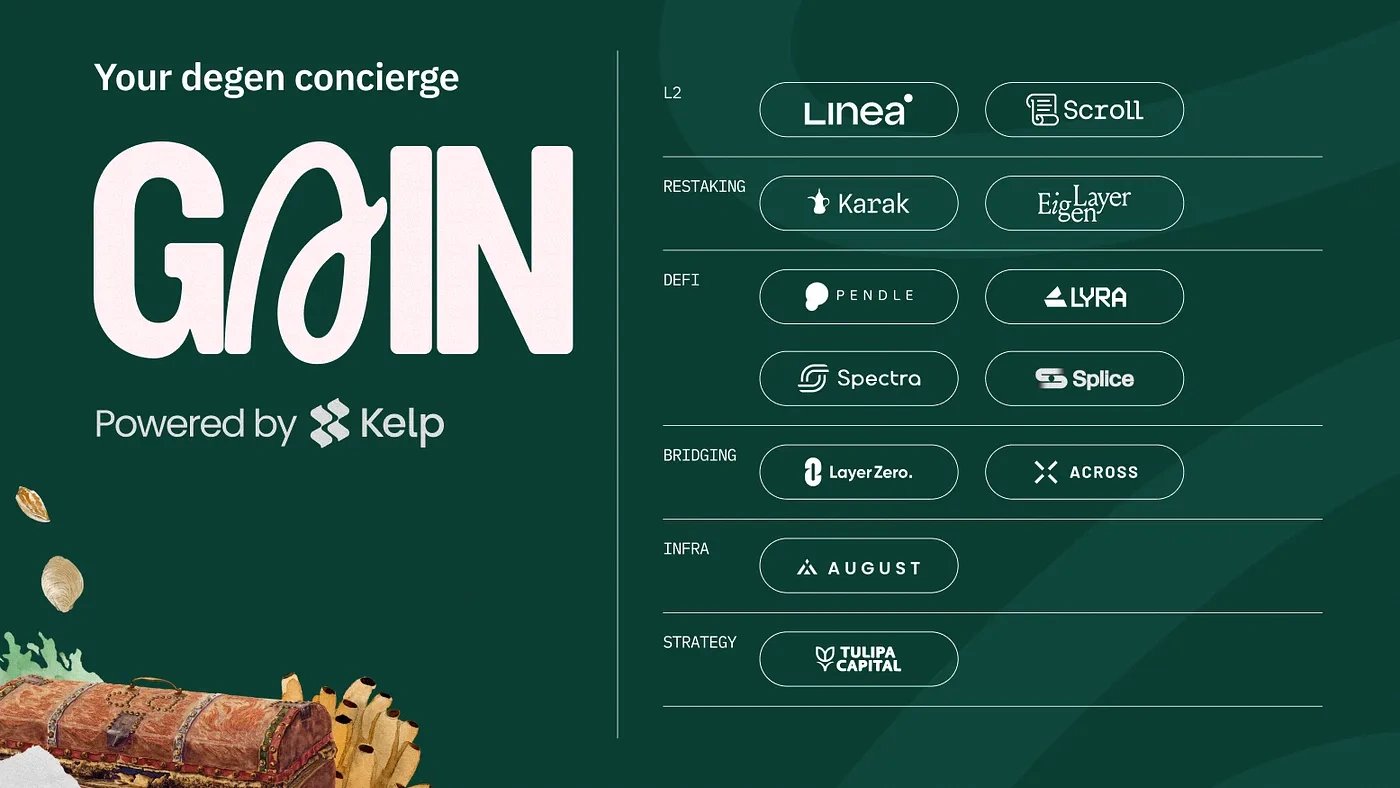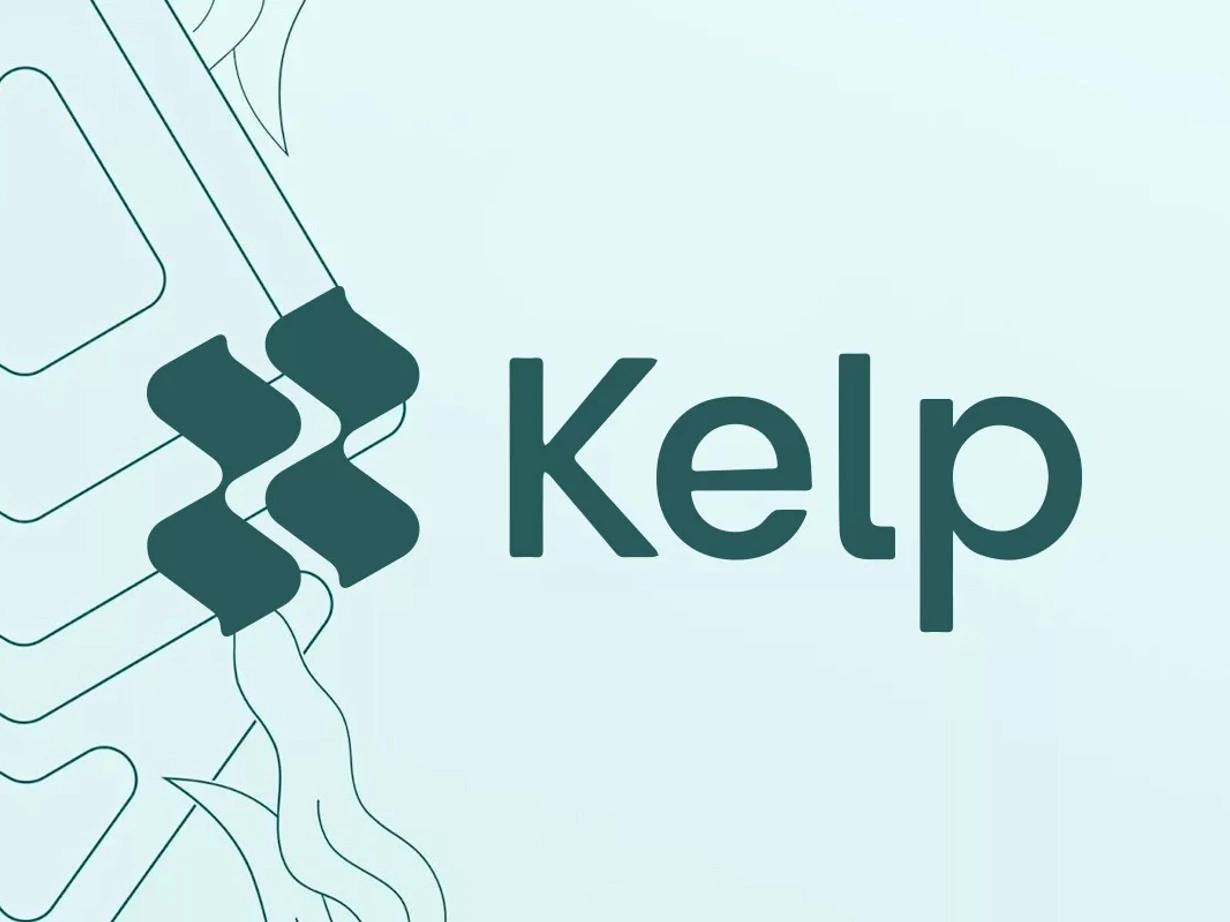위키 구독하기
Share wiki
Bookmark
Kelp DAO
Kelp DAO
Kelp DAO는 이더리움(Ethereum)과 EigenLayer을 위한 크로스체인 스테이킹 솔루션입니다. 공용 블록체인 네트워크를 위한 Liquid Restaking Solutions 개발에 집중하고 있습니다. Kelp DAO 팀은 EigenLayer에서 이더리움을 위한 rsETH라는 LRT 솔루션을 구축하고 있습니다. Amitej Gajjala와 Dheeraj Borra는 Kelp DAO의 공동 설립자입니다. [1]
개요
2023년 11월에 출시된 Kelp DAO(캘프 다오)(https://iq.wiki/wiki/dao)는 이더리움(Ethereum)(https://iq.wiki/wiki/ethereum)과 EigenLayer(아이겐레이어)(https://iq.wiki/wiki/eigenlayer)를 위한 크로스체인 유동성 스테이킹(https://iq.wiki/wiki/liquid-staking) 플랫폼입니다. 이더리움(https://iq.wiki/wiki/ethereum) 검증자(https://iq.wiki/wiki/validator)의 인출 자격 증명을 EigenPod(아이겐팟)로 전달하여 EigenLayer(아이겐레이어)(https://iq.wiki/wiki/eigenlayer) 모듈의 검증 및 보안을 용이하게 합니다. 이 메커니즘을 통해 검증자 노드에 필요한 32 ETH(https://iq.wiki/wiki/ethereum) 미만을 보유한 ETH(https://iq.wiki/wiki/ethereum) 토큰 보유자는 이더리움(https://iq.wiki/wiki/ethereum)에서 ETH(https://iq.wiki/wiki/ethereum)를 스테이킹하고 EigenLayer(아이겐레이어)(https://iq.wiki/wiki/eigenlayer)에서 재스테이킹할 수 있습니다. [2][3]
Kelp DAO(캘프 다오)(https://iq.wiki/wiki/dao)는 사용자가 보유한 암호화폐(https://iq.wiki/wiki/cryptocurrency)를 스테이킹(https://iq.wiki/wiki/staking)하는 과정을 간소화합니다. 기존에는 스테이킹(https://iq.wiki/wiki/staking)이 단일 블록체인(https://iq.wiki/wiki/blockchain)으로 제한되었지만, Kelp DAO(캘프 다오)(https://iq.wiki/wiki/dao)는 멀티체인 스테이킹(https://iq.wiki/wiki/staking)을 가능하게 함으로써 혁신을 이루었습니다. 이는 다양한 블록체인(https://iq.wiki/wiki/blockchain)의 암호화폐(https://iq.wiki/wiki/cryptocurrency)를 나타내는 래핑 토큰을 통해 가능하며, 사용자는 다양한 체인에서 자산을 스테이킹할 수 있습니다. [2][3]
Kelp DAO(캘프 다오)(https://iq.wiki/wiki/dao)는 사용자로부터 스테이킹된 자산을 모아 블록체인(https://iq.wiki/wiki/blockchain) 전반의 DeFi(https://iq.wiki/wiki/defi) 애플리케이션에 사용되는 유동성 풀(https://iq.wiki/wiki/liquidity-pool)을 형성합니다. 사용자는 이러한 풀에 기여함으로써 거래 수수료(https://iq.wiki/wiki/trading-fee) 및 프로토콜 인센티브와 같은 소스로부터 보상을 얻습니다. [2][3]
2024년 5월 22일, Kelp DAO(캘프 다오)(https://iq.wiki/wiki/dao)는 사모 토큰 판매 라운드에서 900만 달러를 조달했다고 발표했습니다. SCB Limited와 Laser Digital이 350만 달러를 공동 투자하며 라운드를 주도했습니다. Bankless Ventures(https://iq.wiki/wiki/bankless-dao), Hypersphere Ventures, Draper Dragon, DACM, Cypher Capital, GSR, HTX Ventures, DWF Ventures(https://iq.wiki/wiki/dwf-labs) 등 다른 투자자들도 참여했습니다. Scott Moore, Sam Kazemian(샘 카제미안)(https://iq.wiki/wiki/sam-kazemian), Marc Zeller, Saurabh Sharma, Amrit Kumar(암릿 쿠마르)(https://iq.wiki/wiki/amrit-kumar)와 같은 엔젤 투자자들도 참여했습니다. Kelp는 2월에 자금 조달을 시작하여 3월에 완전 희석 기준 9,000만 달러의 평가액으로 라운드를 마무리했습니다. [11]
KEP 토큰
$KEP 또는 켈프 어닝 포인츠(Kelp Earned Points)는 EigenLayer와 연관된 ERC-20 토큰입니다. 켈프 플랫폼을 통해 얻은 포인트이며, 각 $KEP는 하나의 EigenLayer 포인트와 같습니다. 사용자는 축적된 EigenLayer 포인트를 자유롭게 관리할 수 있으며, 저장, 거래 및 사용자의 선호도에 따라 활용할 수 있습니다. 리스테이커는 켈프 분산형 애플리케이션을 통해 $KEP 토큰을 청구할 수 있습니다. 매주 리스테이커는 전주에 얻은 EigenLayer 포인트에 해당하는 $KEP를 청구할 수 있습니다. [4]
ERC-20 토큰인 $KEP는 자유로운 전송과 거래를 가능하게 하여 EigenLayer 포인트와 잠재적인 리스테이킹 보상의 유동성을 향상시킵니다. ETH 또는 LST 리스테이킹만이 EigenLayer 포인트를 얻는 유일한 방법이 아닙니다. $KEP는 대안을 제공하여 리스테이킹 자본 효율성을 높이고 서로 다른 사용자 그룹 간의 분할을 도입합니다. 이러한 그룹에는 EigenLayer 포인트와 $KEP를 생성하는 포인트 생산자(Point Producers)와 $KEP를 거래/매수/매도/롱/숏하는 포인트 누적자(Point Accumulators)가 포함되며, 반드시 리스테이킹을 위한 ETH 자본을 보유할 필요는 없습니다. [4]
$KEP의 즉각적인 사용 사례에는 자동화 시장 조성자(AMM)에서의 거래와 $KEP <> rsETH, $KEP <> USDC 페어를 사용한 분산형 거래소(DEX)에서의 유동성 제공이 포함되며, 켈프 마일과 스왑 수수료와 같은 보상을 얻을 수 있습니다. [4]
rsETH
rsETH는 EigenLayer에서 담보물(collateral)로 승인된 LST에서 생성된 통합 유동성 restaked 토큰입니다. 이를 통해 스테이킹 자산의 분할 소유가 가능해지고, restaking 및 탈중앙화 금융 (DeFi)에 대한 접근이 간소화되며, DeFi 프로토콜 내에서 합성 가능성을 활용할 수 있습니다. 또한, 복잡한 보상 시스템 및 과도한 가스 수수료와 같은 문제를 해결합니다. [2][5]

켈프 마일즈 (Kelp Miles)
켈프 마일즈는 EigenLayer에 재스테이킹된 포인트를 보완하여 재스테이커에게 추가 인센티브를 제공합니다. 재스테이킹에 대한 보상을 강화하고 재스테이커의 기여에 비례하는 인센티브를 제공하는 것을 목표로 합니다. DeFi 참여자는 rsETH를 사용하여 켈프 마일즈, EigenLayer 포인트 및 DeFi 활동으로부터 추가 수익을 얻을 수 있습니다. 켈프는 켈프 마일즈를 증가시켜 DeFi 기회에 대한 인센티브를 더욱 강화하고 사용자에게 DeFi 참여에 대한 추가 혜택을 제공합니다. [6]
Pendle Finance
켈프 DAO 사용자는 rsETH를 사용하여 미래 수익의 토큰화 및 거래를 가능하게 하는 프로토콜인 Pendle과 상호 작용할 수 있습니다. 주요 포지션은 네 가지입니다. [7]
- PT-rsETH: PT 포지션은 만기 시 원금만을 나타냅니다. rsETH를 Pendle 프로토콜에 설정된 기간 동안 예치하여 만기 시 고정 수익을 얻는 것을 포함합니다. 이 전략을 사용하면 환율에 따라 할인된 가격으로 PT-rsETH를 받게 됩니다. 만기 시에는 각 PT-rsETH에 대해 1 ETH 상당의 rsETH를 받게 되며, 이것이 수익이 됩니다. 주목할 점은 이 포지션은 EigenLayer 포인트나 켈프 마일을 얻지 못하며, 고정 수익 확보를 위한 것일 뿐입니다. 또한 PT-rsETH는 만기 전 언제든지 판매할 수 있습니다.
- YT-rsETH: YT 포지션은 만기까지 기초 자산의 수익을 나타냅니다. 각 YT-rsETH는 풀 만기까지 1 ETH 상당의 rsETH에 의해 생성된 모든 수익과 포인트를 제공합니다. YT의 가격은 시장 가격에 따라 결정되며, 시장이 YT를 어떻게 평가하는지를 반영합니다. 예를 들어, 1 rsETH가 10 YT-rsETH로 거래되는 경우 사용자는 각 YT-rsETH에 대해 10 ETH 상당의 rsETH에 해당하는 마일과 포인트를 얻습니다. YT-rsETH 가격에 대한 투기는 장기 수익률 APY, EigenLayer 포인트 및 켈프 마일과 같은 요소를 기반으로 할 수 있지만, 철저한 조사가 권장됩니다.
- LP-rsETH: LP 포지션은 PT-rsETH와 SY-rsETH로 구성되며, SY 부분은 수익을 얻습니다. 이 설정은 단일 자산 노출을 제공하여 Impermanent Loss (IL)을 최소화합니다. 장점으로는 EigenLayer 포인트, 증가된 켈프 마일, 스테이킹/재스테이킹 수익, PT-rsETH의 고정 수익, 스왑 수수료 및 Pendle 인센티브가 있습니다.
- Liquid Lockers: Pendle의 Liquid Locker 중 두 곳인 Penpie와 Equilibria에서 rsETH에 접근할 수 있습니다.
파트너십
통합
펜들(Pendle)과 함께, 켈프 DAO는 유니스왑(Uniswap), 커브(Curve), 그리고 밸런서(Balancer)에도 통합되었습니다. 유동성을 제공하는 사용자는 3배의 켈프 마일과 아이겐레이어(Eigenlayer) 포인트를 얻을 수 있습니다. [7]
폴리헤드라 (ZK)
2024년 4월 16일, 켈프 DAO는 차세대 웹3 인프라 개발업체이자 영지식 증명(ZKP)을 사용하는 폴리헤드라(ZK)와 파트너십을 체결했습니다. 이 파트너십을 통해 폴리헤드라는 프로토콜의 보안을 강화하기 위해 3억 달러 상당의 스테이킹된 ETH를 받았습니다. [8]
Laser Digital
2024년 4월 26일, Kelp는 노무라 그룹의 디지털 자산 자회사인 Laser Digital과 전략적 파트너십을 발표했습니다. 이 파트너십을 통해 Laser Digital의 현재 및 미래 디지털 펀드에 restaking 솔루션이 도입되었으며, rsETH가 디지털 펀드에 통합된 최초의 LRT가 되었습니다. [9]

플래너 파이낸스(Planar Finance)
2024년 5월 12일, 플래너 파이낸스(Planar Finance)는 켈프 DAO(Kelp DAO)와의 파트너십을 발표했습니다. 이 파트너십을 통해 양 프로토콜의 다양한 보상 소스를 활용하여 수익률을 최적화하는 것을 목표로 했습니다. [10]
Anzen 프로토콜 (Anzen Protocol)
2024년 6월, Kelp는 AVS와 restaker 간의 지불 최적화를 강화하기 위해 Anzen 프로토콜(Anzen Protocol)과의 파트너십을 발표했습니다. [12]
팀이 Anzen과 파트너십을 맺은 이유에 대해 다음과 같이 답했습니다.
"Anzen은 AVS-to-restaker 상호 작용에 대한 지불을 최적화하는 데 전념하는 최초의 플랫폼으로 두각을 나타냅니다. Anzen의 시스템은 실시간 '안전 계수'(SF)를 통해 경제적 안전 장치를 동적으로 조정하여 DeFi의 건강 지표와 유사하게 안정성과 보안을 보장합니다."
이번 협업은 커뮤니티의 restaked ETH에 대한 수익률을 높이고 보안을 강화할 것으로 예상됩니다. [12]
켈프 기반 Gain
2024년 8월 13일에 출시된 켈프 기반 Gain은 사용자 보상 최적화를 위한 한 단계 발전입니다. 이 프로그램은 단일 다각화 전략을 통해 여러 레이어 2(L2) 에어드롭 및 DeFi 기회에 대한 간소화된 접근 방식을 제공하여 수익 잠재력을 향상시킵니다. [13]
"Gain은 여러 L2 네트워크 및 DeFi 프로토콜에 대한 액세스를 한 번에 제공하는 사용자의 탐욕스러운 집사 역할을 합니다. 개별 포지션을 지속적으로 모니터링할 필요 없이 에어드롭 기회와 DeFi 전략 참여를 간소화합니다. 단 한 번의 클릭으로 사용자는 고성장 기회의 세계를 열 수 있습니다." - 블로그에서 언급[13]

잘못된 내용이 있나요?
